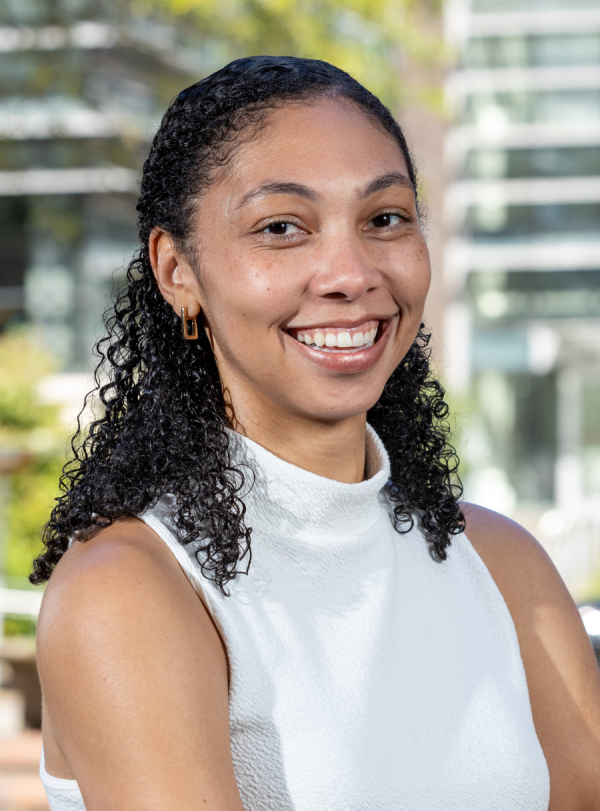By Julia Davis
Bethany Gordon integrates social sciences with engineering, aiming for more inclusive designs that consider human behavior.
How can we as engineers change our systems and our outlook to help facilitate changes in the community?

CEE Assistant Professor, Bethany Gordon
Engineering is often seen through the prism of numbers, measurements and the quest to design what is needed — a realm dominated by concrete and steel, where equations and physical laws dictate the field. But Assistant Professor Bethany Gordon wants to challenge the notion that engineering is solely about the physical, and is working to integrate social sciences into traditional engineering. Her research asks: What if engineers put a larger focus on understanding and integrating the complexities of human behavior, equity and community needs into design?
“Often, we think about research as looking at the community and asking, ‘What do they need to change?’ But that puts a lot of strain on the community. So instead, we're trying to reverse the gaze and ask, ‘How can we as engineers change our systems and our outlook to help facilitate changes in the community?’” she says.
Inspired by decades of grassroots efforts and environmental justice scholarship, this approach emphasizes a partnership with communities rather than a top-down imposition of solutions. Gordon's work tries to use behavioral and social sciences as catalysts for cultural and systemic change within the field of engineering.
“I think about using behavioral and social sciences as tools to shift culture and the status quo away from some very opaque and inequitable systems that we have in place. The outcome is really about getting frontline communities in the room and actually being able to shift some power to them,” Gordon says.
This vision seeks to dismantle barriers, fostering a more inclusive and equitable process that values the insights and experiences of those traditionally marginalized, especially during the design and planning stages of projects.
Gordon introduced the concept of “frontline designers” as opposed to frontline communities, with the aim of having community members be co-creators in the process. To bring this concept to life, Gordon is exploring innovative models of community engagement that amplify the power of local voices. In the future, she envisions creating pathways for community members to become an integral part of the engineering design process, compensating them for their insights and contributions through fellowship programs. The eventual goal is to “have a process for them to move from community member to something that we, as engineers, would be somewhat comfortable giving a level of power and voice to in a decision-making space,” explains Gordon.
This initiative not only challenges the traditional roles within engineering projects but also acknowledges the invaluable input of those who live in and understand their communities better than anyone else, according to Gordon.
Gordon hopes that more engineers will integrate the principle of reflexivity into their work and critically examine how their identities and experiences influence their decisions and interactions with the communities around them.
“Reflexivity is understanding what your experiences and your identity have to do with the ways in which you take in knowledge, make meaning of it and then make decisions and put that back out into the world”
In her role within the Construction, Energy, and Sustainable Infrastructure (CESI) research group, Gordon is actively involved in projects that utilize her multifaceted approach to research. Her Ph.D. students explore a range of issues, from stormwater infrastructure to transportation and the implications of modern slavery in construction. She also teaches courses such as Behavioral Science for Engineering Designers, which challenge students to think critically about their biases and the role of community in design processes.
Although she is in the beginning stages of her research and work within CEE, Gordon’s perspective has been a valuable addition as the department works toward its strategic plan, including the Grand Challenge of engineering for socioeconomic and environmental justice. Her work underscores the idea that the soundness of our structures lies not just in physical strength but in the community voice and inclusivity that they embody.
Originally published March 28, 2024